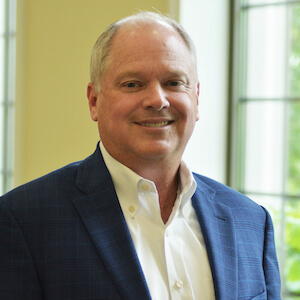Blog
Catholic Schools and Planned Giving Part Two: Wills Societies and Other Fundamentals
 William J. Acton, Senior Partner at Advancement Partners
William J. Acton, Senior Partner at Advancement Partners

There are myriad planned giving vehicles a donor may opt to use, and the sheer complexity and variety often intimidates schools from tackling planned giving in ways that make sense.
In Part One of our series on planned giving for Catholic schools, we focused on the basic building blocks of establishing a planned giving program:
- Establishing awareness of planned giving opportunities within your community and
- Identifying a constituency of planned giving prospects
In this blog, we expand a bit on what these fundamentals look like and suggest some additional tactics you may wish to implement.
There are myriad planned giving vehicles a donor may opt to use, and the sheer complexity and variety often intimidates schools from tackling planned giving in ways that make sense. Rather than getting bogged down in navigating trusts or life insurance or wills, we at API urge everybody to stay focused on the two building blocks mentioned above: establishing awareness and identifying your prospects.
If you don’t have a "Wills Society" – named for your school founder/namesake or year of incorporation – do that today. And if you don’t have a simple trifold brochure and webpage outlining the purpose and benefits of your society, do that ASAP as well.
Your Wills or Legacy Society should be incredibly simple: anyone who has remembered your school in their will, or arranged for any kind of gift upon their death (i.e. named your school a life insurance beneficiary) is automatically included in the society, regardless of amount. It’s up to you if you want to require written testament of the planned gift or if you simply want to accept the donor’s verbal pledge of a planned gift.
Wills are easily and often changed, so the "written" commitment isn't all we might think it is anyway. The benefits of the society should also be incredibly simple to understand AND for you to execute. Once an individual joins the society, he or she receives the following:
- Perpetual membership in the society.
- Permanent listing on the Wills Society web page and published each year in a special section of the school's annual report.
- Invitation to an annual Mass and reception at the school (or a similar easy to execute event).
- Receipt of a periodic Wills Society newsletter with school and stakeholder features.
Recruiting membership in the society requires a few simple steps:
- Use wealth research to help identify planned giving prospects in your database. The quality of information we receive from research companies like WealthEngine has never been more comprehensive or easier to use. Using metrics gathered in research the right way will help you narrow down your universe of planned giving prospects in a far more sophisticated way than simply choosing alums of a certain age.
- Craft a personal letter of invitation that accompany your Wills Society brochure in a US Post Office mailing to your identified planned giving constituency.
- Coordinate a Wills Society introductory email (paired with a link to your Wills Society web page or even a PDF of the brochure) to be sent to a broader range of your constituency within the same timeframe of your hard-copy mailing.
- Coordinate social media announcements with the mail and email as well.
In all communications, you are inviting candidates (1) to notify you if they have made a planned gift, (2) consider a planned gift or (3) reach out with questions on the society and planned giving. Let them know when you will post the first Wills Society list of names (on your website or in a publication, for example).
Next, we suggest creating a Planned Giving newsletter which you can send (digitally, if you like) to your identified constituency 1-2 times per year. The newsletter can follow a standard format each issue:
- News on planned or major gifts received by the school since the last newsletter (a large stick gift to name the science lab, a newly established scholarship fund, etc.)
- A donor feature story on someone who has made a planned gift or made arrangements for a planned gift. Tell their story, why they choose to make a planned gift, etc.
- A feature on one type of a planned gift – gifting an IRA Required Minimum Distribution, endowing an annual fund gift by remembering the school via life insurance, etc.
- An explanation of the Wills Society
Finally, at the core of a strong planned giving program is talking to/visiting with prospects about planned giving. There are a variety of ways to do this:
- Follow up each mailing/emailing with appointment setting calls to a specified subgroup of your planned giving populations.
- As you conduct your capital campaign, major gift and annual fund personal solicitations, be sure to incorporate planned giving into the ask in a very careful and strategic way.
- Consider hosting an estate planning breakfast for your constituents every other year.
In Part III of our Planned Giving Blog we will expand a bit on the right way to incorporate planned giving into your personal visitations and how you and your advancement committee can monitor progress.
It's easy to push an assertive planned giving program to the bottom of the advancement office "To Do" list, but it is a huge mistake to do so. Remember the enormous transfer of wealth that is currently underway. Planned giving does NOT have to be as complicated or as time consuming as so many think, and if the office is staffed like a 600-student high school, no one needs to establish Harvard University planned giving expectations. Most of the harvest from planned giving programs comes from planting seeds...nurturing those seeds over time...and staying patient.
No time like the present to get started.
Posted on: November 15, 2021
